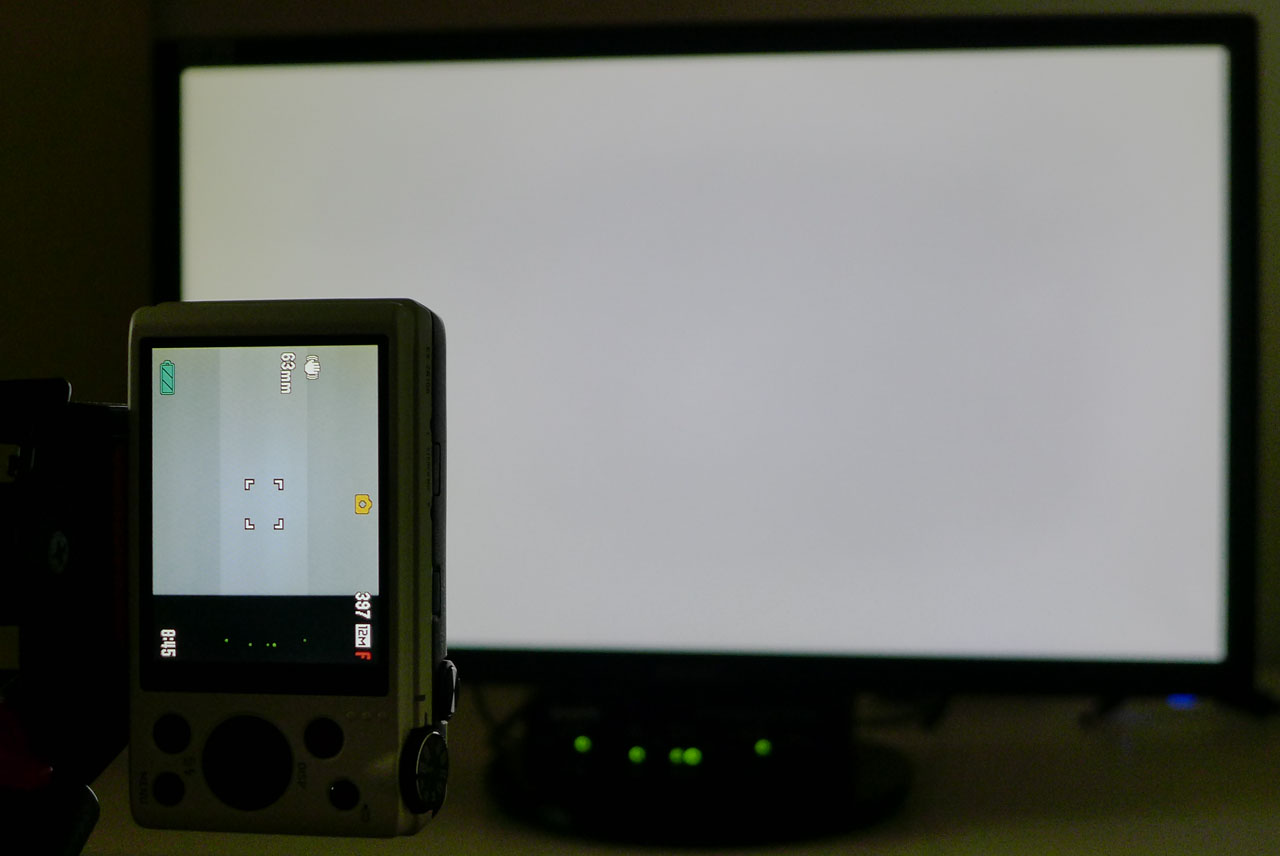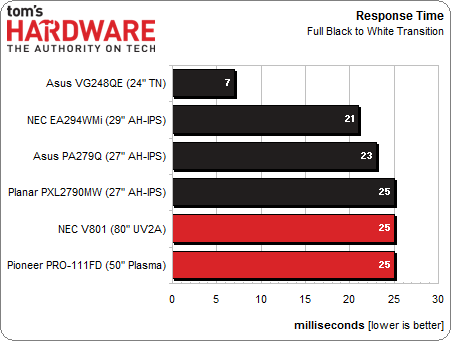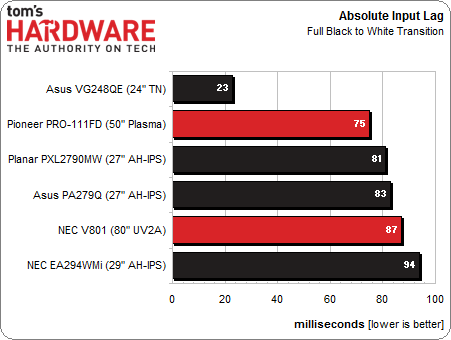NEC V801 Review: Benchmarking A Massive 80-Inch Monitor
Results: Pixel Response And Input Lag
To perform these tests we use a high-speed camera that shoots at 1000 frames per second. Analyzing the video frame-by-frame allows us to observe the exact time it takes to go from a zero-percent signal to a 100-percent white field.
The pattern generator is placed at the base of the monitor so our camera can capture the precise moment its front-panel LED lights up, indicating that the monitor is receiving a video signal. With this camera placement, we can easily see how long it takes to fully display a pattern after pressing the button on the generator’s remote. This testing methodology allows for accurate and repeatable results when comparing panels.
Here’s a shot of our test setup. Click on the photo to enlarge.
The brighter section of the camera’s screen is what actually appears in the video. You can see the lights of the pattern generator in the bottom of the viewfinder. We flash the pattern on and off five times and average the results.
Here’s the screen draw result.
Playing games on a giant screen is undeniably cool. But if you demand the highest speed from your rig, the V801 is not quite fast enough. It measures about the same as the other IPS-based monitors we've tested. Though it's probably not quick enough for the most competitive gamers, the panel does a good job of keeping motion blur and smearing to a minimum.
Here are the lag results.
Get Tom's Hardware's best news and in-depth reviews, straight to your inbox.
We expected the Pioneer to do better in the input lag test, but it only scored slightly better than the rest of the pack (except for Asus' 144 Hz screen, of course). The V801 was a little below average compared to other IPS desktop monitors. We did play a few console games on it using an Xbox 360. Since its output is limited to 60 Hz, we had no trouble keeping up in fast-paced shooters and first-person titles.
Current page: Results: Pixel Response And Input Lag
Prev Page Results: Viewing Angle And Uniformity Next Page The NEC V801 Is 80" HDTV Extravagance
Christian Eberle is a Contributing Editor for Tom's Hardware US. He's a veteran reviewer of A/V equipment, specializing in monitors. Christian began his obsession with tech when he built his first PC in 1991, a 286 running DOS 3.0 at a blazing 12MHz. In 2006, he undertook training from the Imaging Science Foundation in video calibration and testing and thus started a passion for precise imaging that persists to this day. He is also a professional musician with a degree from the New England Conservatory as a classical bassoonist which he used to good effect as a performer with the West Point Army Band from 1987 to 2013. He enjoys watching movies and listening to high-end audio in his custom-built home theater and can be seen riding trails near his home on a race-ready ICE VTX recumbent trike. Christian enjoys the endless summer in Florida where he lives with his wife and Chihuahua and plays with orchestras around the state.
-
Someone Somewhere Yeah, 1920x1080... those pixels are 0.92mm square. That's pretty easy to see with the naked eye; far bigger than a full stop.Reply
27.5ppi... *shudders*.
EDIT:
the V801’s size is better expressed in feet: 227.6 (69.37 square meters for the rest of the world)
Ummm... 70 square meters is pretty big. That's about half of the average house. I think you'll find it's ~1.76 m² or 19 ft². -
virtualban For that size I clicked the article in hopes that maybe it was some 8K monitor. Stopped reading after 1080pReply -
baddad I've had a Mits 82" DLP since 2011 I paid $1900.00, that is the heart of my media center, so $9400 for just a monitor is a bit much.Reply


